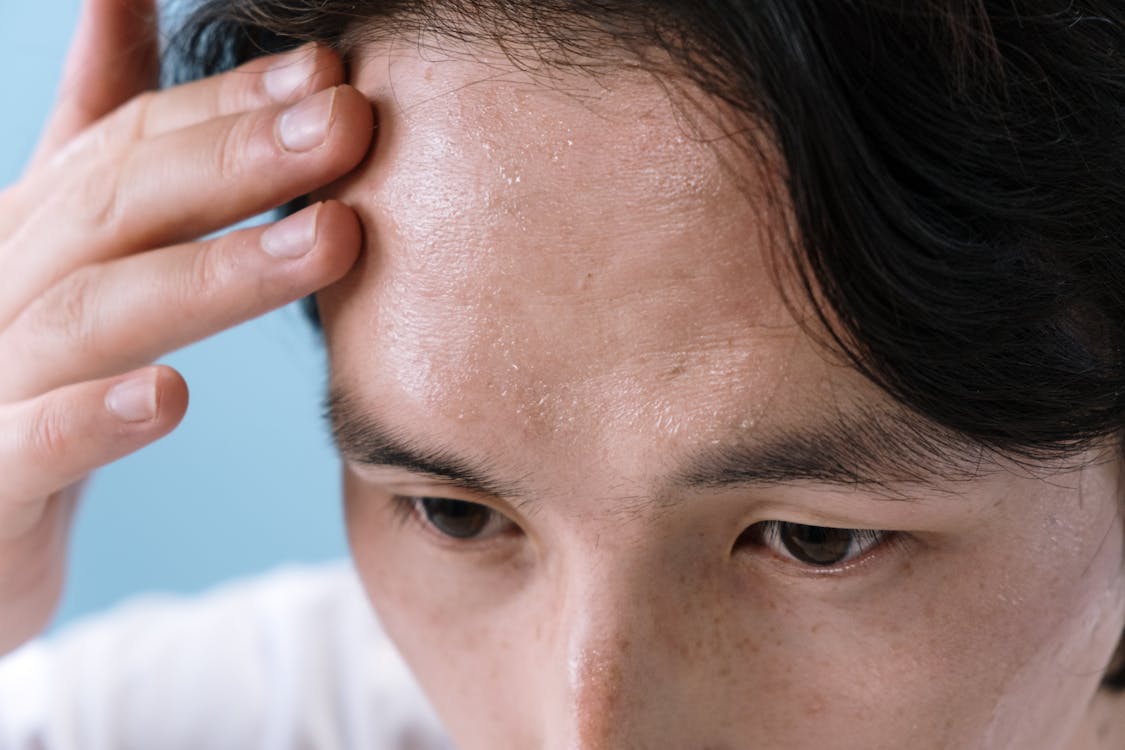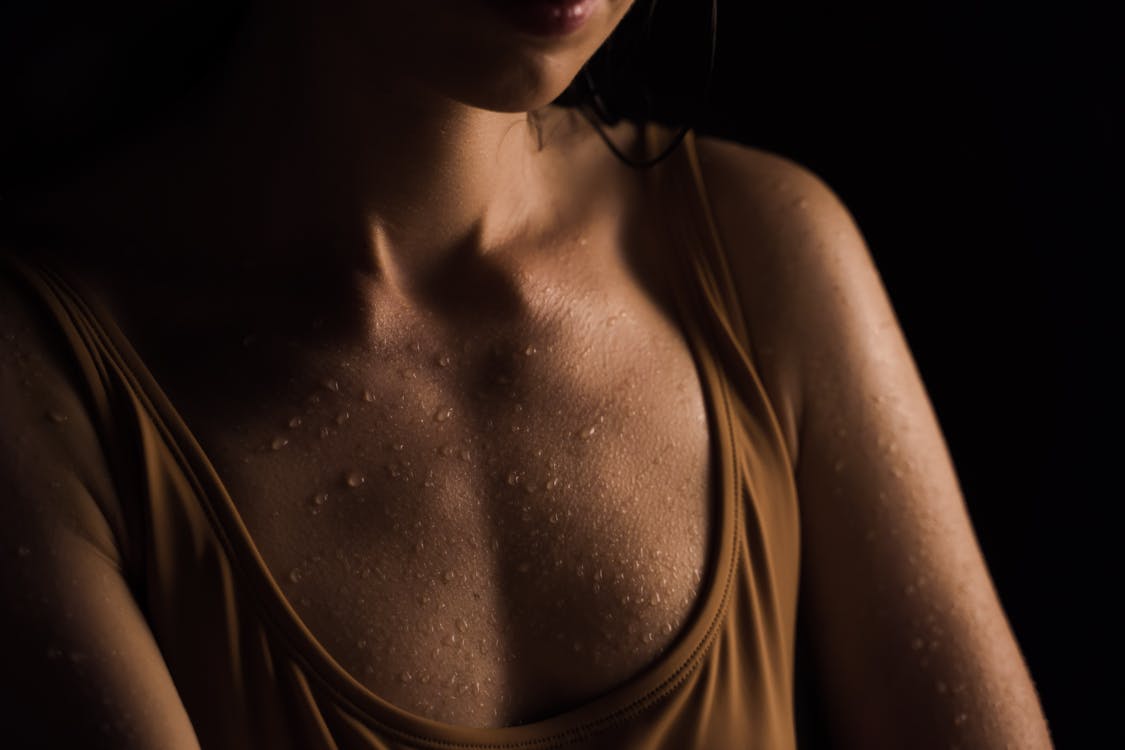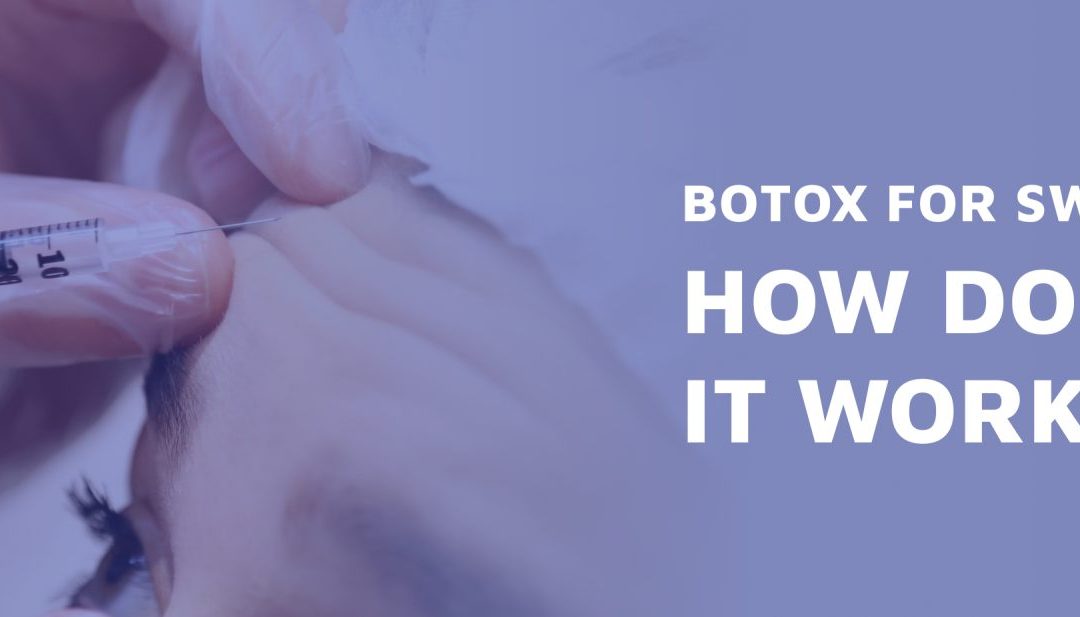The first thing that comes to mind at the mention of Botox treatments is cosmetic injections used to reduce the signs of aging, facial contouring, and general skin care. Botox injections are certainly an effective treatment in the area of aesthetic cosmetic beauty, but Botox can also be used to treat some medical conditions.
One particular use is for treating excessive sweating, medically known as Hyperhidrosis. Both underarm sweating and perspiration in other areas of the body can affect the quality of life. It is a big issue for those who cannot keep armpit sweat at bay with simple over-the-counter deodorants or special prescription antiperspirants.
Excessive underarm sweat might not be a danger to physical health, but it can be a danger to mental wellness when people feel like they are unable to take part in normal activities for fear that they will not be able to stop sweating.
When levels of excessive sweat gland activity are at a serious enough level, any dermatologist or healthcare professional will not hesitate to recommend Botox or Dysport as a super effective treatment option.
Let’s take a closer look at the process, application, and full effects of Botox as a treatment for excess sweating.
What Is Botox?
Botox, a derivative name of botulinum toxin, is an injectable product made from the same microorganisms that cause botulism poisoning. 
It is a well-known and nowadays, very common, cosmetic treatment that smooths facial wrinkles by temporarily paralyzing the muscles underneath the skin, but that isn’t its only application.
Plenty of doctors all over the world will treat a range of issues with Botox, including muscle weakness spasms, migraines, and the subject of this article, hyperhidrosis which is a condition that is characterized by abnormal and excessive sweating.
You are a good candidate for Botox if your sweating cannot even be improved by prescription antiperspirants. Botox is an FDA-approved treatment for those who sweat profusely from their armpits, but it can also be safely used to reduce sweating in other areas like the face, feet, and hands.
How Does Botox Help Excessive Sweating?
Botox injections work by blocking the release of the neurotransmitter called acetylcholine, which acts on sweat glands to trigger the release of sweat.
In normal circumstances,  your nervous system will activate your sweat glands when it senses that your body temperature has risen, as this is a natural way that the body works to cool itself. However, in people with hyperhidrosis, those nerves that start the process are overactive and you sweat even when your body temperature isn’t raised.
your nervous system will activate your sweat glands when it senses that your body temperature has risen, as this is a natural way that the body works to cool itself. However, in people with hyperhidrosis, those nerves that start the process are overactive and you sweat even when your body temperature isn’t raised.
When Botox injections are administered, the overactive nerves in the treatment area become paralyzed for a time, and if they are paralyzed and unable to function, your sweat glands won’t be able to work in overdrive! It is important to note that Botox works only to prevent sweating in the specific areas where it has been injected. It isn’t like a vaccine that will spread throughout your entire body from a single shot.
Where On The Body Can Botox Be Used?
Currently, Botox is only approved for the treatment of focal hyperhidrosis. This is where excessive sweating is limited to one specific area. Botox is only approved for excessive underarm sweating, also known as axillary hyperhidrosis, with ample evidence that a series of injections can help to reduce armpit sweat production by more than 50% for at least six months.
Qualified doctors, however, are permitted to use it in an ‘off-label’ fashion to treat other areas of the body that experience excess sweat. This includes:
- Palms
Research has suggested that the effectiveness of Botox for excessive palm sweating can reduce the symptoms by between 25% and 50% for any period from three weeks to six months.
- Face & Scalp
Botox can also help with excessive facial sweating problems, with research suggesting that a reduction in facial sweating is one of the most common side effects of people who get Botox injections in their forehead for anti-wrinkling and anti-aging. This can work for up to six months.
- Soles Of The Feet
A smaller number of studies have been done on the soles of the feet, but the research that does exist suggests that a large percentage of patients treated responded positively to the injection of Botox in their soles to reduce sweat production.
The Botox Treatment for Excess Sweating
Typically, a Botox treatment session will last about 45 minutes, but the administering of the actual injections themselves will only take between 10 and 15 minutes.
Botox injections themselves don’t take a very long time and can be completed in an office/clinic environment. Your dermatology professional will mark the injection site on your skin with some ink, and then inject the solution just under the surface of the skin with a very fine needle. On average, you will receive between 15 and 20 injections to form a grid pattern in the treatment area.
themselves don’t take a very long time and can be completed in an office/clinic environment. Your dermatology professional will mark the injection site on your skin with some ink, and then inject the solution just under the surface of the skin with a very fine needle. On average, you will receive between 15 and 20 injections to form a grid pattern in the treatment area.
In some cases, your practitioner will offer a form of pain prevention, such as ice to numb, or may administer a local anesthetic.
One of the biggest benefits of this treatment is that you can return to work and your normal life as soon as the procedure is finished. You need to schedule a follow-up appointment for the results to be checked and to see if you need any touch-up injections on missed spots.
What To Expect After The Procedure?
You should be able to go home and resume your normal life immediately after any Botox procedure. In general, there is very little specific aftercare required, but you may feel a little tender around the injection site for a few days after the treatment.
Your practitioner will want to arrange a follow-up appointment for about two weeks after the treatment to make sure that the Botox has taken full effect, and this is the point where any extra injections will be administered if needed.
You should avoid using deodorant or perfumed products under your arms for about 24 hours after the injections to avoid irritation, and also avoid any sessions of intense exercise as well as hot baths for one day.
You should not be perturbed or confused by the dryness that you might feel, because it will be a bit of a mental shock to not experience excessive sweating after such a long time suffering with the issue.
Where to Get Botox for Hyperhidrosis
As with any cosmetic procedure that involves an invasive action, regardless of how minor, you should only have the treatment in a professional, certified setting with trained staff.
Z Center for Cosmetic Health has been chosen by thousands of happy and satisfied clients for a wide range of successful procedures including Botox for axillary hyperhidrosis. Dr. Zadeh is an expert in treating excessive sweating and has been doing so for several years.
Don’t hesitate to get in touch with one of the dedicated and professional team members who will be more than happy to answer any questions that you might have.






